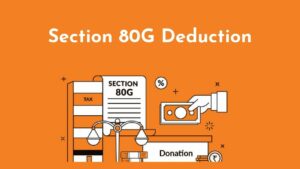Income Tax for Self-Employed – Self-employed is those individuals who sell their services to various employers without the need for a long term deal with either of them. Income Tax Act, 1961, levies income tax on self-employed individuals under the heading “Profit and gain from business or career.” Self-employed employees are considered an occupation in the act. Company is described in the Act as “any trade, trade or manufacture or any adventure or concern in the nature of trade, trade or manufacture.” However, the occupation has not been specified in the Act. Vocation, as set out in the Act, also requires occupation. So, a painter, a sculptor, an editor, an auditor, a lawyer, an architect, an astrologer, falls under a trade or a profession or vocation.
Profits can be measured after exclusion of all costs and expenditures suffered for receiving money in the normal course of business, employment or vocation. Professional income earners must have their financial statements audited by the CA and file a tax audit report if their gross receipt is Rs. 50 lakhs or more in the FY.

Self-Employed Tax Filing
In the regular course of self-employed tax filing, an ITR– 4 must be filed. They are required to claim any costs suffered in order to gain money from the practice. These costs are deductible according to relevant documentation in the record. In the assumption scheme, the reduction of all costs and depreciation is assumed to have been permitted to result in earnings from the profession.
Presumptive Taxation
Government has implemented a presumptive tax system for skilled earners whose overall gross income is much less than ₹50 lakhs in the FY and for firms whose revenue is much less than ₹2 crore. They may not have to maintain all those documents, books of accounts, etc. under such a system. The benefit is calculated to be 8% of the gross receipts for companies and 50% of the gross receipts for the occupation in the FY and must thus be charged income tax at the rate of income tax available to them.
This policy is optional for them. When they do not fall underneath the scheme, they must have their books of accounts audited by a CA and, thereby, file the ITR and pay tax Underneath the presumption scheme, assesses may assert a tax savings investment underneath section 80C and a medical insurance premium u/s 80D. All deductions u/s 80 of Chapter VI A are permissible. This policy applies to an Indian assessee who is an Individual, Hindu Undivided Family (HUF) or a Partnership Company.
If a resident assessee has chosen to file an ITR under the Presumptive Scheme in any FY, they will drop out from the Presupposed Scheme during the next FY and file an ITR as a regular assessee. In this situation, though, the advantages of the presumptive scheme could really be used for the next 5 FY.
For instance:
If the resident assessee chooses to submit ITR under the presumption scheme for the FY 2016-17 and 2017-18 and in the very next FY 2018-19, the assessee opts out from the presumption scheme and files ITR under the usual process, so he/she cannot choose to file his/her return underneath the presumption scheme during the next five FY, from 2019-20 to 2023-24.
Tax Rates for Self-Employed/Businessmen
Profit and gain from the business is subjected to tax at the very same rate as any wages. It shall be charged at the following rates for the 2018-2019 financial year, based on the type of individual.
In the case of a person where age is less than 60 years old, Hindu Undivided Family, Association of Persons, Body of Individuals, Artificial juridical person.
| Income > 2,50,000 | N/A |
| Between ₹2,50,000 and ₹5,00,000 | 5% |
| Between ₹5,00,000 and ₹10,00,000 | 20% |
| Income > 10,00,000 | 30% |
If the senior citizen age is between 60 and 80.
| Income > 3,00,000 | N/A |
| Between ₹3,00,000 and ₹5,00,000 | 5% |
| Between ₹5,00,000 and ₹10,00,000 | 20% |
| Income > 10,00,000 | 30% |
Super Senior Citizen whose age is above 80 years
| Income > 5,00,000 | N/A |
| Between ₹5,00,000 and ₹10,00,000 | 20% |
| Income > 10,00,000 | 30% |



